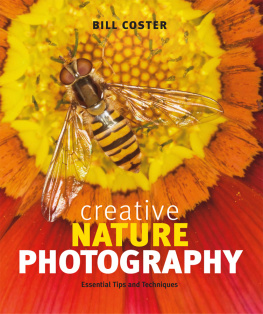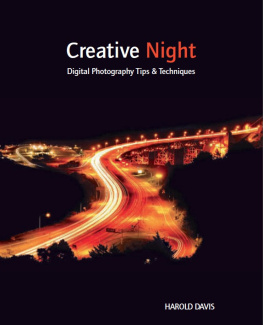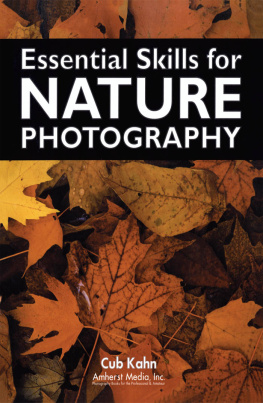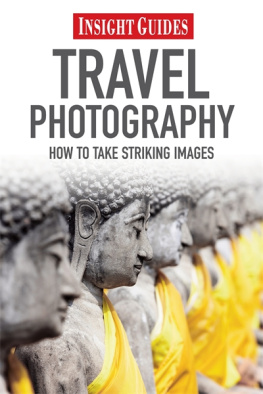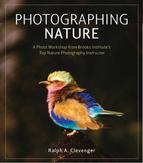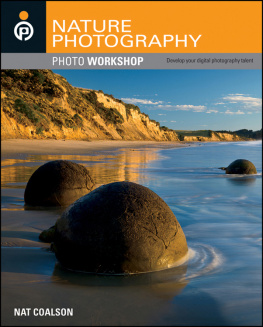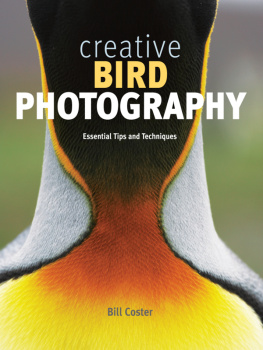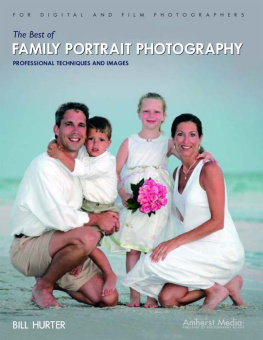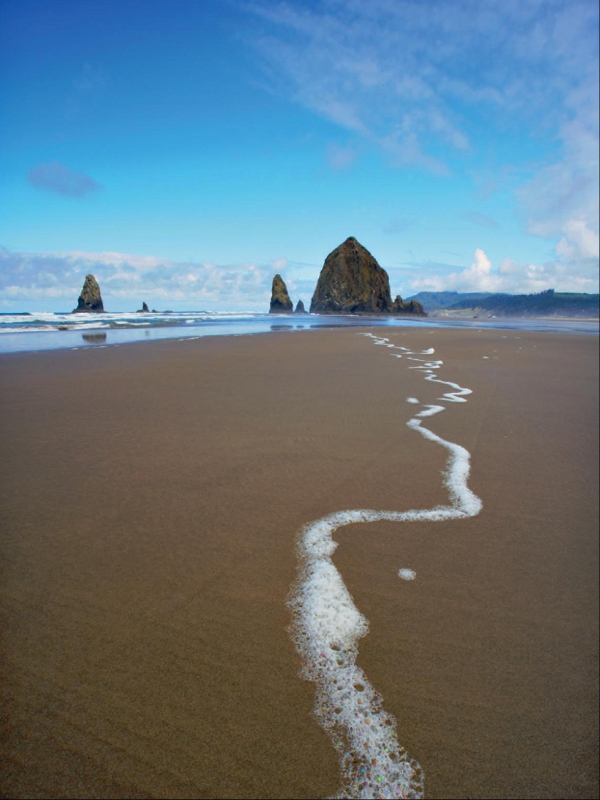
BILL COSTER
creative
NATURE
PHOTOGRAPHY
Essential Tips and Techniques

Text and photographs copyright 2011 by Bill Coster
Cover and interior photographs by Bill Coster
All rights reserved. No part of this book may be reproduced, stored in a retrieval system or transmitted, in any form or by any means, without the prior written consent of the publisher or a licence from The Canadian Copyright Licensing Agency (Access Copyright). For a copyright licence, visit www.accesscopyright.ca or call toll free to 1-800 -893-5777.
Greystone Books
An imprint of D&M Publishers Inc.
2323 Quebec Street, Suite 201
Vancouver BC Canada V5T 4S7
www.greystonebooks.com
First published in Great Britain by New Holland Publishers (UK) Ltd.
Cataloguing data available from Library and Archives Canada
ISBN 978-1-55365-847-4 (pbk.)
ISBN 978-1-55365-848-1 (ebook)
CONTENTS
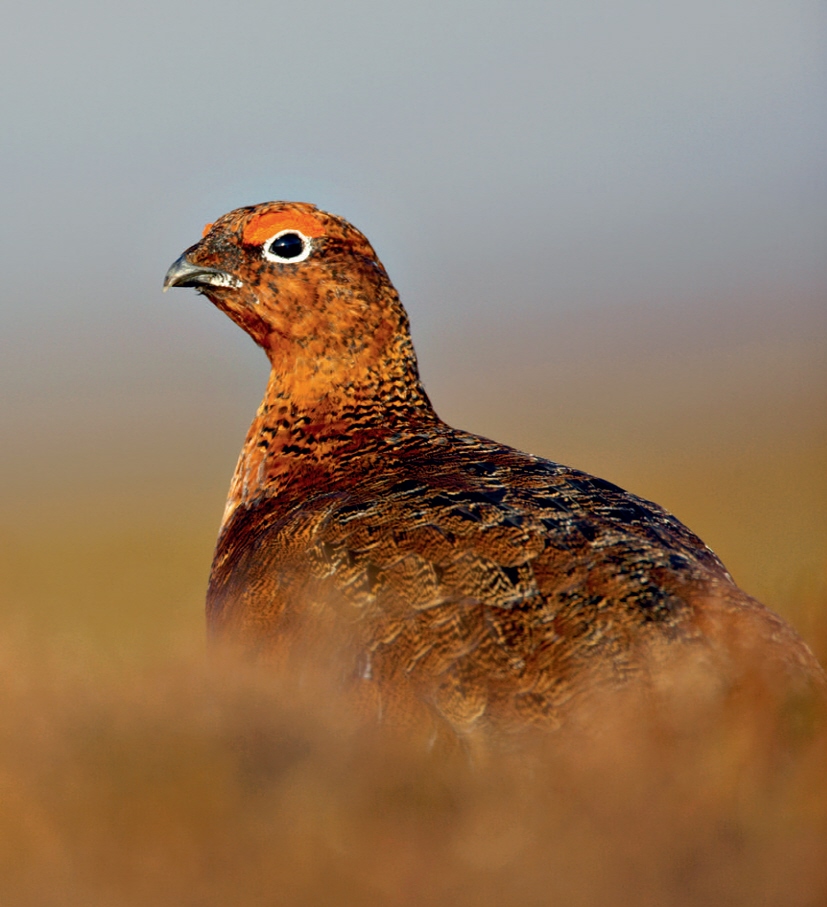
I have been interested in natural history from an early age, so when I bought my first camera it was inevitable that animals would be my first photography subjects. I became keen to record the exotic species and locations I saw in my travels. Over time the photography became increasingly important, until I was planning trips based primarily on photographic potential. In tandem with the improvement in my photography, I began to have my work published in magazines and joined a major picture library specializing in nature. I remained a semi-professional nature photographer for a number of years, and at the same time established a successful career in IT with a large company. Although I enjoyed the work, I never felt really comfortable with corporate culture, and eventually made the decision to give up the day job and concentrate on photography.
Since then I have never looked back. I have travelled extensively to quickly increase my stock of images to generate more income. Throughout my new career I have always had the enthusiastic support of my wife Diana, who accompanies me whenever possible. Having that extra pair of eyes when photographing wildlife has proved very useful. Travelling together also enables us to spend more time at locations and explore their photographic possibilities more fully than could be done in short visits.
Nature photography is a very broad subject, ranging from the all-encompassing landscapes of the worlds wild places to the minute detail revealed in a close-up of a small insect. The relationship between the landscape and the plants and animals that live in it is a very close one. It is the adaptations of living things to enable them to meet the challenges of thriving in each unique environment that have resulted in the huge variety of species on our planet.
The chapters in this book are arranged according to the challenges they pose to the photographer, rather than in any rigorously scientific way. The first chapter describes the photographic equipment required for nature photography, based largely on my own experience, and includes straightforward advice on choosing cameras, lenses and other pieces of kit. The following chapters form the core of the book. Using a similar approach, each chapter begins by capturing the entire landscape of a specific environment, then gradually works down to details of the plants and animals that inhabit it. I have focused on the best photographic opportunities in each environment, so the balance of the subjects in each chapter varies you do not find many insects in the icy polar regions, for example, so there are none in that chapter.
Digital cameras were used to create most of the images in the book, except in cases where a film image better illustrated a point or environment. Images captured with digital technology come with a wealth of data that includes details of the camera settings employed when the pictures were taken; this has been used to provide technical information on these pictures. Such data is not available for the film images, and this is reflected in the exposure details provided for these pictures.
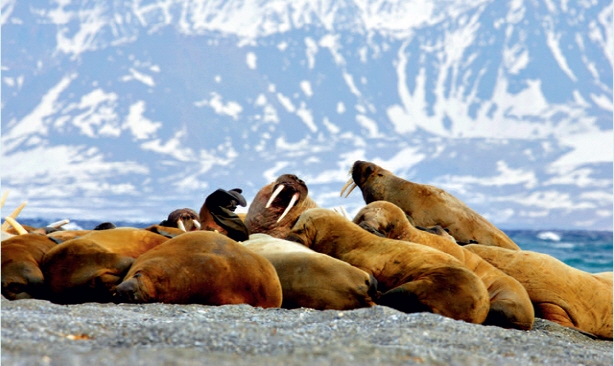
The scope of nature photography is very broad, and almost every piece of photographic equipment ever made could be useful at some time when photographing the natural world. The aim of this chapter is to highlight the most useful equipment.
I also explain why I personally find the equipment useful. Although images shot on film have been used for some of the examples in this book because they best suited a particular situation, film is for all practical purposes dead, so all the equipment advice is based on digital cameras.
CAMERAS
It is possible to take landscape pictures using digital compact cameras, but these are not practical for wildlife photography due to their fixed lenses of limited focal length. Most compacts only produce images in the jpeg format, which severely limits the post-capture control you have over your images. There are some compacts that can produce RAW files, and I use one of these myself the Canon G9. The great advantage of using a compact is that you never have a problem with dust. This is because the lens is fixed to the camera body, so the dust just cannot get inside it. On the negative side, because these cameras have very small sensors they tend to suffer considerably with sensor noise. I found that the pictures from my G9 were unusable above 80 ISO.
At the other end of the scale are digital mediumformat cameras. However, these are incredibly expensive at the moment, and with digital technology evolving so rapidly I do not feel they are a good investment. They are also bulky, and although great for landscapes are not very practical for a wide range of wildlife photography.
The best overall cameras for nature photography are the 35mm-equivalent digital SLRs (Single Lens Reflex) cameras with interchangeable lenses. The two big players are Canon and Nikon, who tend to lead the way in the constant improvements that are being made as digital technology continues to evolve. I have been a Canon user for many years, and great rivalry seems to exist between users of Canon and Nikon. In reality both systems are excellent, and the choice of lenses and other accessories for them far exceeds that of any other manufacturer. There are other systems, of course, but if you are just starting out I suggest you choose one of the two leading brands.
There are a number of factors to consider when choosing a digital camera body. I have attempted to avoid the technical detail as much as possible and to keep the advice very practical.
Sensor Size | In the days of film, every camera produced the same-size image on 35mm film, which was 36 x 24mm. When it comes to digital cameras, the image size is determined by the size of the sensor that records the picture. When this approximates the size of a single 35mm film image, it is known as full frame. Nikon and Canon produce 35mm-like digital cameras with smaller sensors that effectively crop the centre out of the full-frame image, giving the impression that the subject has been magnified.
Cameras with full-frame sensors are generally relatively expensive, but they are the most useful for landscape photography because they do not crop images and therefore retain the full effect of wide-angle lenses.
Next page
